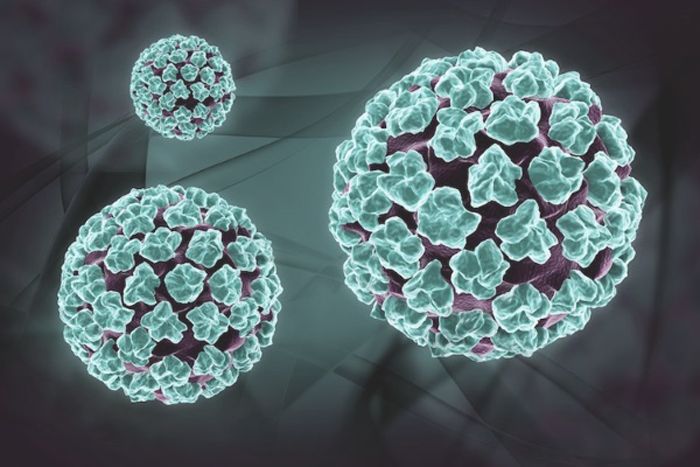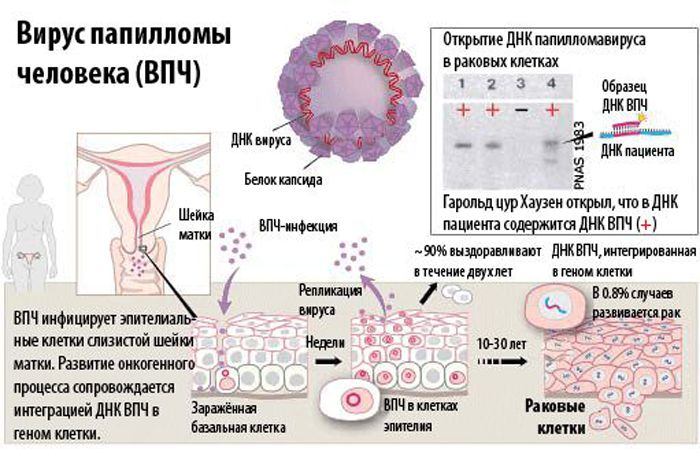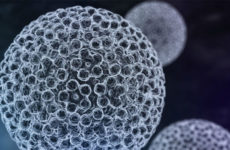The Human Papilloma Virus (HPV) type 33 is one of the most dangerous strains of the virus. It can provoke the development of cancerous tumors, seriously undermine human health and lead to possible complications of chronic forms of the disease.
HPV type 33 can be diagnosed only by an experienced urologist, gynecologist on the basis of an initial examination and data obtained as a result of laboratory tests.

Содержание:
- 1 Features of HPV 33, how dangerous it is
- 2 Mechanism and routes of infection
- 3 At-risk groups
- 4 How does papillomavirus manifest itself in women?
- 5 How does papillomavirus manifest itself in men?
- 6 Diagnosis of human papillomavirus
- 7 Ways to fight and prevent
- 8 Medical treatment of the virus
- 9 Effective methods for removing papillomas in intimate places
- 10 Can papillomas be removed during pregnancy?
- 11 Consequences and danger: how to live, what to do
Features of HPV 33, how dangerous it is
HPV type 33 is an easily transmitted aggressive agent of the internal environment. It quickly passes from one state to another (from sleeping to reactive) and populates the mucous membranes, the skin of a sick person.
Its main distinguishing feature, danger is a high degree of oncogenicity. Although, there are more loyal types of 33 strains – medium oncogenicity, in which the probability of the formation and development of cancer cells is 35–50% out of 100.

Mechanism and routes of infection
The mechanism of transmission of papilloma virus is represented by a standard picture of contact spread: through blood, through saliva, through sweat, through the skin during microtrauma, as a result of sexual contact, in the household way.
The main routes of infection are represented by the following attachment options:
- As a result of the kiss. Saliva, as a biologically active product of vital activity, can be a carrier of dangerous pathogenic bacteria. When kissing mouth to mouth or when saliva comes into contact with the skin, the virus is transported from a sick person to a healthy one. Obvious signs of oral infection with HPV are: redness of the oral mucosa, the appearance of a red rash in the corners of the mouth and on the soft palate, the occurrence of jamming.
- Through touch, hugs. Sweat is also one of the biological carriers of DNA. It consists of water, urea and cellular structures. Clothing, bedding, upholstery, and many other fabrics can be breeding grounds for infection.
- Important: HPV strain 33 is very resistant to chemicals and dies only when boiled. Dishes, hygiene products, bed linen of a sick person must be subjected to heat treatment. The sick person must be isolated from other family members.
- External transmission (through the skin). Microtrauma, cuts, splintered papillomas are one of the most likely factors for the occurrence of infection. Since the affected area is a direct source of infection. Upon contact with door handles, dishes, personal hygiene items, other people (handshake, hug, transfer of an infected object), the virus moves freely from a sick person to a healthy person.
- Infection through sexual contact. HPV 33 strains can be found in seminal fluid and semen. Part of the bacteria is also located on the glans penis in a dormant (anabiotic) state. Unprotected intercourse is the first and most common way of transmission.
- Household way of transmission. Sharing personal hygiene products, dishes, underwear and bedding – lead to mass infection of all family members (neighbors) living in the same area with the sick person.

At-risk groups
The risk group for the occurrence of a viral infection, with its further progression and destructive effect on the body (crystallization), includes the following categories of citizens:
- Adolescents from 13-17 years old. Early puberty, neglect of the rules of contraception, extreme vulnerability of the body – can become serious prerequisites for the emergence of various kinds of diseases, their rapid progression with the transition to the most complex forms of the course.
- People who are immunocompromised (HIV).
- Often ill. This is a special medical category, which includes patients suffering from acute respiratory viral diseases more than three times a year. They have a low ability to resist external attacks.
- Men and women who tend to lead a promiscuous lifestyle. This group can also include those who tend to consume large amounts of alcohol and depend on drugs.
- Children under 3 years of age. Living in the same area with an infected person, children and the elderly are the first to suffer. Their immune system is the most susceptible, and the ability to resist is almost non-existent.
How does papillomavirus manifest itself in women?
Infectious, viral, fungal infection have three stages of development. On each of them, the symptoms will be completely different.
HPV 33 types in women, manifested as follows:
- First stage. Threefold increase in epithelial cells. More than 1/3 of the body is damaged by the papilloma virus. The patient complains of mild malaise, frequent bouts of fatigue, weakened immunity, discharge from the vaginal area.
- Second stage. further spread of the virus. More than 2/3 of the organism is affected by keratinized epithelium. Small red growths appear in the lumens of the cervix. They hurt, itch and are the root causes of multiple erosions.
- Third stage. Virus infection is obvious. The patient has a high fever, weakness, nausea, vomiting, diarrhea. Red spots appear on the mucous membranes. The cervix is inflamed. There is an exacerbation of chronic diseases, a general deterioration in immune processes.

How does papillomavirus manifest itself in men?
Men, unlike women, almost do not suffer from the negative appearances of HPV. However, when an infection enters the body, representatives of the strong half of humanity may experience: difficulty with urination, weakened immunity, erectile dysfunction, the appearance of neoplasms on the skin of the hands, discomfort in the groin area.
Diagnosis of human papillomavirus
The complex of diagnostic measures for the detection of Human Papillomavirus type 33 is divided into two categories:
- Standardized methods – examination, basic tests.
- Special research tools – hardware diagnostics, visits to narrowly specialized specialists, laboratory tests to detect infections.
Standard Methods
At the first visit to the gynecologist, a routine examination is scheduled. It includes palpation, the collection of anamnestic data (complaints of the patient), as well as the collection of basic smears for the study of microflotation, the appointment of general urine and blood tests.
Specialized Research Tools
Most of them involve studying the problem with the help of medical equipment.
- Colposcopy. A colposcope is a device for detecting pathological changes in the mucous membrane of the cervix. It is inserted into the vagina. The total duration of the study is no more than 5 minutes. The technique is absolutely painless.
- Scraping. With the help of microforceps, doctors separate the damaged area of the skin (mucosa) and examine it under a magnifying device, adding various reagents.
- Biopsy. In the acute course of the disease, the patient is prescribed a biopsy – the collection of biomaterial for a comprehensive study. This test allows you to determine the type of virus, its characteristics, the degree of influence on the body, the rate of spread, and so on.
- DNA test. Specialists of oncology laboratories, with the help of some reagents, determine the mobility of the viral base, its aggressiveness and the degree of impact on healthy cells. A DNA test is performed when cancer is suspected.
- Blood test for latent infections. Allows you to accurately establish the strain of the reagent introduced into the blood.
Ways to fight and prevent
Unfortunately, human papillomavirus infection is not amenable to definitive treatment. With the help of medications and traditional medicine, it can be put to sleep, transferred to an inactive stage.
Medical treatment of the virus
Traditional remedies for Strain 33 include:
- Reception of immunomodulators .
- The appointment of a broad-spectrum antibiotic.
- The use of a multivitamin complex.
- Getting rid of warts with ointments, gels, hardware techniques.
Folk recipes
Traditional medicine is a supportive, complementary therapy for an existing disease. Their use is advisable in the form of oils, herbal preparations and tinctures.

The most effective herbs and oils for fighting inflammation are:
- Chamomile.
- Sage.
- Myrrh.
- Eucalyptus.
- Series.
- Cranberry.
- Celandine.
- Garlic.
- Juniper.
Effective methods for removing papillomas in intimate places
Papillomas are common warts that appear uncontrollably in any accessible place.
Their removal on sensitive areas of the skin is carried out using pedalized means. Their main parameters are: low acidity, natural composition, no age restrictions.
However, there are also hardware methods for removing keratinized areas of the epidermis. Their use is advisable in the event of the appearance of warts on the inner surface of the labia, in the area of the anus.
- Radio wave excision – with the help of a special knife, an unwanted neoplasm is removed. Local anesthesia is prescribed to relieve pain.
- laser therapy. Aimed at cauterization of papilloma.
- Surgical removal. Shown in cases of low efficiency of other methods. In other words, it is used when the wart “takes root”, while touching the microcapillary network.
Can papillomas be removed during pregnancy?
HPV type 33 in pregnant women is subject to mandatory therapy in the early stages of virus detection. Without specialized medical treatment, there is a chance of the birth of a sick, disfigured baby with mental retardation.
Therapy in pregnant women is carried out with the help of local antibiotics, vitamin supplements, means of strengthening the placental barrier, drugs aimed at preventing multiple developmental disorders in the child.
Consequences and danger: how to live, what to do
Many men and women ignore the first signs of the disease, believing that nothing terrible is happening. Attributing everything to a cold, overwork, and an unhealthy diet, a person himself allows the infection to gain a foothold in the body and begin its destruction.
- Infertility. Cervical cancer and male infertility are the most frequent complications caused by the presence of HPV type 33.
- Exacerbation of hidden cardiovascular diseases.
- Extensive inflammation of the urinary tract.
- Violation of the blood supply.
- Ulcerative changes in the mucous membranes.
- Re-infection with another type of bacteria.
HPV type 33 affects mainly irresponsible citizens who do not care about their own health, lead an immoral lifestyle and do not undergo preventive examinations by a gynecologist (urologist). Accidental infection is also possible, but the risk of getting an infection through household contact is extremely small.







